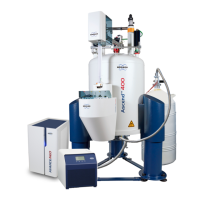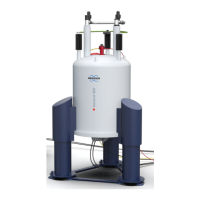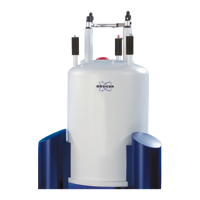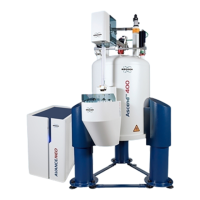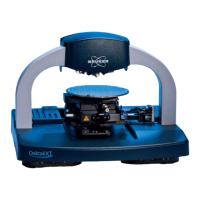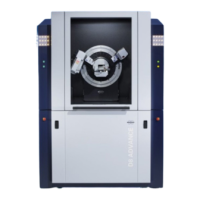Installation and Operation of the DCS 350 and DHS 1100 Chambers
84 DOC-M88-EXX268_V1_12.2016
Figure8.12: Rocking-curve scan at 25°C with determination of rotation error
5. If you get a plateau instead of a broad peak, the sample height is too low. The sample
height is ok if peak intensity is half of the maximum intensity (if the detector is not
saturated). If the sample height is not ok, roughly estimate the peak position of the
rocking curve and move the diffractometer there. Then, repeat point 4 and 5 until the
sample height is ok.
6. If the sample height is ok, set theta to zero on the peak position using Reference And
Offset Determination from the menu bar in COMMANDER. Set theoretical position to
0° in the reference tab and click apply (see figure above).
7. Repeat point 5 and to check if the deviation is within the range of 0°±0.02°.
8. Repeat point 4 for a final height check.
9. Continue to determine the Z-position for other temperatures. Rotational alignment
should be stable with temperature and therefore does not have to be repeated under
non-ambient conditions. Fill a list like the one shown below for your chamber.

